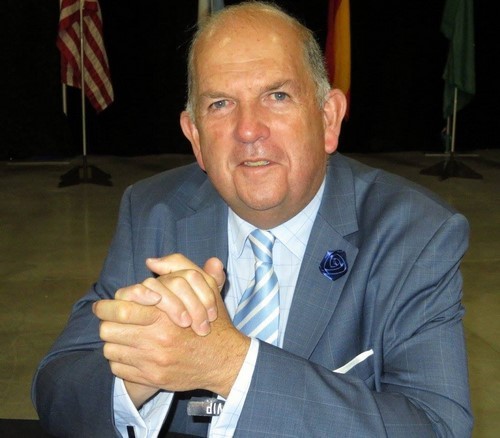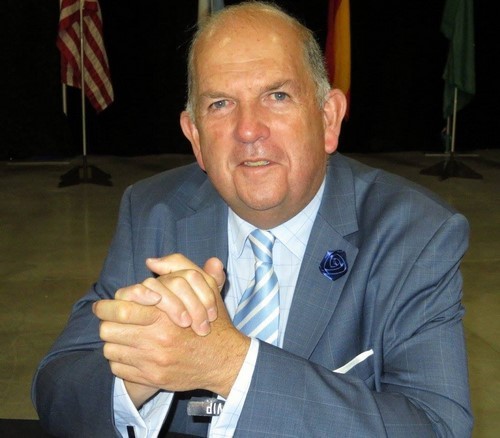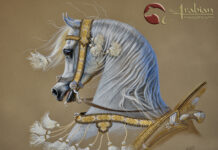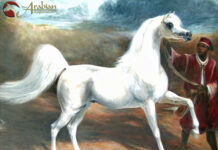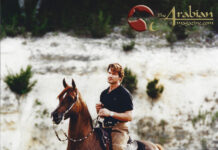International judge Graham Smith from Australia has become a familiar face at European, American and United Kingdom shows – both as a spectator and judge. Well liked by those people that get to know him, Graham is widely regarded as being an honest and caring person who genuinely likes all aspects of the equine industry, but in particular the Arabian breed and the “honour of being a judge”. Following his recent judging assignment at the 2016 American Breeders’ Alliance World Cup in Las Vegas, I was able to catch up with him and find out more about this popular Australian judge from ‘Down Under’.
Graham was born in Canberra, the Capital of Australia. “This city is affectionately known as the ‘bush capital’ because it is surrounded by natural bushland, and that allows for lots of beautiful riding,” Graham tells me. “It also provides an opportunity to see the diverse native wildlife including kangaroos, echidnas, wombats, lizards and snakes! It is there that I have two farms that keep me busy with maintaining them as well as looking after my horses and farm animals.”
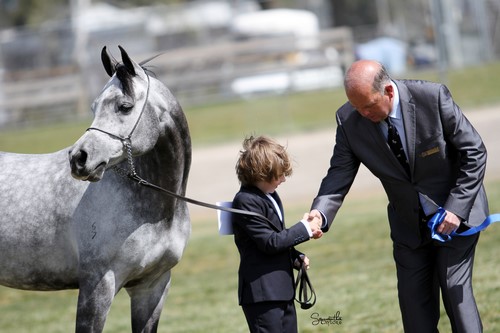 |
| Graham Smith congratulating Evan Hardwick. |
The passion that Graham has for horses began at a very early age. He recalls his many visits as a young boy to paddocks surrounding his home, to just sit and watch the horses graze. “Even at an early age, I was struck by their sheer beauty,” he smiles. “I learned to ride at a local riding school, even though I was too young to be able to pay for lessons. Instead, I reached agreement with the proprietor whereby I had to muck out stables and clean tack all weekend to be given the opportunity to ride a horse for one hour on a Sunday afternoon – after all the paying clients had left and the stable tasks had been completed!”
It was as Graham entered his teenage years that he decided that he wanted to buy his own horse, so he began work as a paperboy to earn the money needed. “My first horse was a part-bred Arabian gelding,” Graham recalls. “Beau Dan captured my heart. He was a horse that had competed very successfully at Royal Show level, three-day eventing and show-jumping. I was blessed to have a horse that was so honest, caring and always wanted to perform for me.”
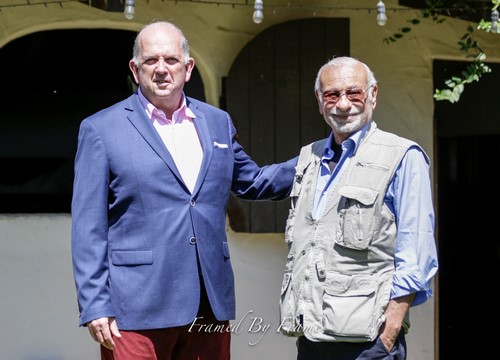 |
| Graham with Nasr Marei ©Framed by Frame |
Throughout his late teens and early twenties, Graham had a number of open class hacks that were Arabians crossed with either Thoroughbred or Warmblood horses, and he enjoyed success at Royal Show and Australian Championship level throughout most states of Australia. He recalls, however, that he had an insatiable appetite for all forms of horse activities at that time. He owned harness and carriage horses, show-jumpers and eventers as well as a wide variety of breed horses including Palominos, Pintos, Australian Stock Horses, Thoroughbreds, Buckskins, Connemaras and, of course, Arabians.
“In order to supplement the costs of keeping an ever increasing number of horses, I professionally backed horses for clients,” Graham recounts. “One of my biggest joys is to successfully collaborate with a young horse to help it become a safe and happy saddle horse. Perhaps one of my silliest ideas to raise money while I was a young man was when I spent a year competing in the professional rodeo circuit riding saddle broncs and bulls prior to university. Most people have a gap year involving travel – mine was riding in rodeos! I guess I am lucky to have so many fond memories of that year and not to have any broken bones!”
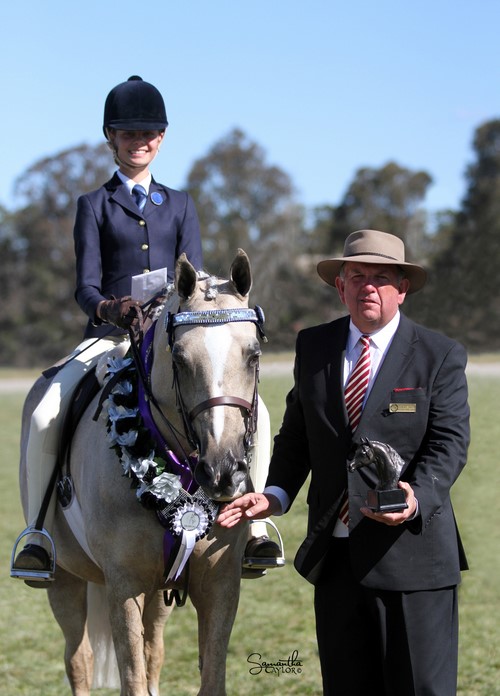 |
| Judging in Australia |
Following that rather hard year on the rodeo circuit, Graham decided that there must be better ways to earn money to pay for his horses. Like most things he sets his mind to, Graham succeeded in having a successful career working for the Australian Government. He was initially studying political science at university when he decided that a career in government would complement his studies. Since then, he has held senior positions in a wide variety of high profile organisations including The Australian Treasury, The Cabinet Office, The Royal Australian Mint as Chief Executive Officer and, more recently, as the Chief Operating Officer at the National Museum of Australia.
“I have loved every position that I have held in my working life, even though most involved high degrees of responsibility and stress,” says Graham. “I maintain that having horses in my life gave me a balance and it was this balance that helped me cope with the sometimes intense political environment that I worked in.”
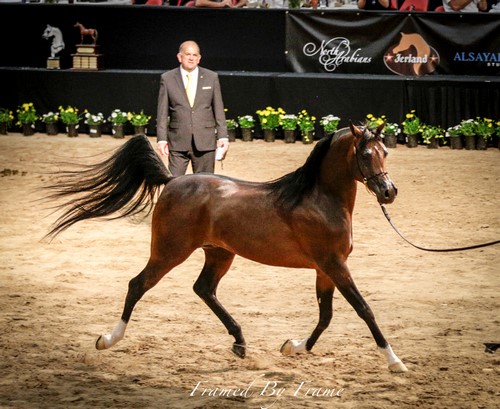 |
| Graham judging Equator in Las Vegas ©Framed by Frame |
More recently, Graham has semi-retired. It should not surprise anyone, however, that for a man as active as Graham has been all his life, sitting around doing nothing is not an option for him. Instead, he holds a number of part-time board positions including with the National Museum of Australia, DonateLife and Gift of Life. “The latter two positions involve me with helping lobby government and multinationals to provide more aid and support to organ and tissue donation within Australia,” explains Graham. “I am passionate about giving back to the community, and this is one way in which I can assist by volunteering my time and experience to help not-for-profit community organisations improve their operations and viability.”
Graham also continues to be active on a range of Arabian and horse-related committees. He has been an Australian National Panel judge for nearly 30 years and is also an accredited judge with many other breed and riding societies. “I was honoured to be awarded the Australian Arabian Horse Societies Distinguished Service Award in 2015 for my services to the Arabian horse in Australia,” Graham tells me. “It really was a huge honour and something that I didn’t expect.” In addition, Graham is also a life member of the World Arabian Horse Organisation (WAHO).
I asked Graham a number of questions about his life with Arabian horses.
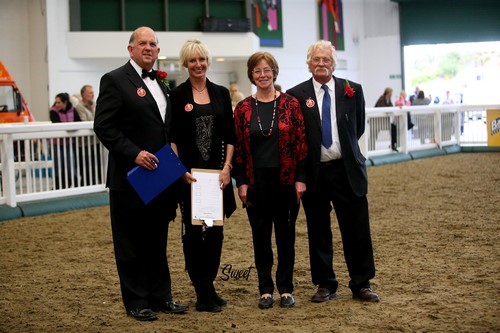 |
| Graham judging in the UK ©Sweet Photography |
Samantha: What do you look for in an Arabian horse when judging?
Graham: Without question, I want a horse to be pleasant to the eye and display type. However, it also must be structurally sound and fit for purpose; that is, I am looking for a symmetrical saddle horse. My background with performance horses always leads me to make sure the horses I select have good legs and feet that are within reason functional. I look for a body that indicates the horse is capable of being a ridden horse, such as a well pronounced wither, well sprung ribs, depth of girth and a capacious chest and body.
Samantha: What about movement, what is that you are looking for?
Graham: Movement for me starts with the engagement of the hindquarters and hocks. I want to see a horse move with the power and strength coming through engagement of the hindquarters. I always look equally at the quality of engagement of the hindquarters to the front legs in order to judge the movement score – unfortunately an increasing number of our show Arabians are becoming longer through the back and loins and as such we are losing the movement our breed has previously been famous for. In recent years, I see fewer horses move with true floating action and suspension in their stride.
Samantha: So do you think we have the balance right between beauty and functional correctness in our modern day Arabians?
Graham: I, like many in the horse world simply love the sheer beauty of the Arabian horse. These attributes are largely covered under the type and head marks. These attributes are indeed hallmark characteristics of the Arabian horse and should be preserved and valued.
However, I am becoming more and more concerned that we have not necessarily placed enough emphasis on structural soundness and saddle horse attributes over having just a pretty – or extreme – head and neck. I am worried that we are losing correct movement, good legs and bodies in our Arabian horses as we breed finer – or extreme – looking Arabian for a show career rather than also considering a performance career for our horses.
I acknowledge that due to societal changes we have fewer riders than in past generations and that the led show horse has arguably filled that gap. However as breeders, judges and owners of Arabian horses we should not lose sight of those riding horse attributes that were so highly valued by generations of Bedouin and desert horsemen.
It is good that we aim to improve the breed through considered and thoughtful breeding. However, every time we move toward or breed for one specialist category – whatever that may be, show, racing etc I worry that we are diluting the core strengths or attributes we value in our classic Arabian horses.
Samantha: You have been lucky enough to judge in a number of countries and continents outside of Australia. What developments have you seen that you like or are concerned about?
Graham: As a starting point we have a lot to celebrate; wherever I travel, I am always struck by the overall sense of love and passion for our Arabian horses. It is not a development but something we should not lose sight of, we have a quality product with an amazing amount of goodwill attached.
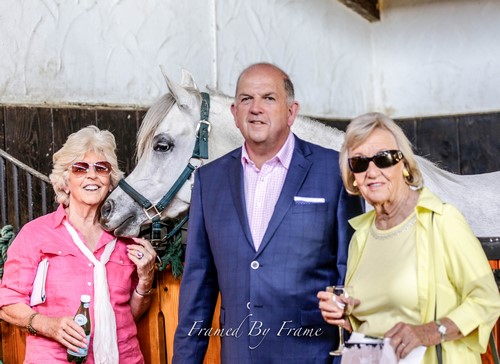 |
| Pat Ryan, Graham, Mary Triggs at Om El Arab International ©Framed by Frame |
We need to continue to work together, at all levels, for the betterment of the breed worldwide. I have confidence that there are good hearted and well meaning Arabian horse enthusiasts to maintain the integrity of the breed and keep its future secure.
In a number of countries it is very pleasing for me to see a real emphasis placed on providing amateur classes at shows. We do not have a sustainable future if we do not encourage and grow our grass roots membership base – providing opportunities for amateurs to compete on a level playing field is a very good initiative and one that I fully support.
I personally sponsor and support amateur classes in Australia, Europe and the UK. For me it is a personal decision but I know in my heart it will help the breed in the long term if we nurture our handlers and help them with basic horsemanship skills. I must take this opportunity to acknowledge and congratulate Johanna Ullström, Al Jassimya Farms and many other show organisers who have embraced this concept by actively supporting amateurs in training, showing and the sponsorship of classes.
Graham’s next appointments see him judge at the UK International in Towerlands, and then he will be watching the All Nations’ Cup in Aachen. He truly is one of the most approachable gentlemen in the industry, and is always happy to stop and have a chat, so do say hello next time you see him.


